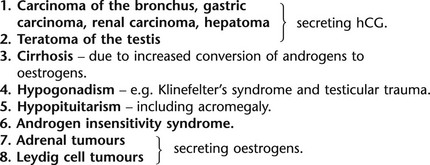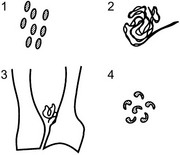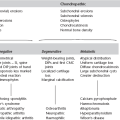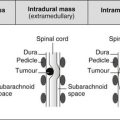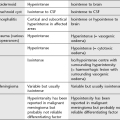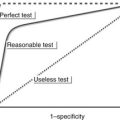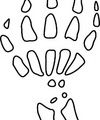Soft tissues
9.1
Gynaecomastia
Pharmacological
1. Oestrogens or drugs with oestrogen-like activity – treatment of carcinoma of the prostate; digitalis.
2. Enhanced oestrogen synthesis – gonadotrophins, phenytoin.
3. Anti-androgens – spironolactone, metronidazole, alkylating agents, ketoconazole.
4. Idiopathic – phenothiazines, tricyclic antidepressants, ACE inhibitors, omeprazole.
9.4
Soft-tissue calcification
Metabolic
1. Gout* – calcified tophi. Punched-out erosions.
2. Calcium hydroxyapatite deposition disease.
3. Calcium pyrophosphate deposition disease*.
4. Tumoral calcinosis – age 20–30 years. Adjacent to a major joint. Firm, non-tender, movable mass which is well-defined, lobulated and calcified on X-ray. Osseous involvement is rare. Usually hyperphosphataemia. ± Calcium fluid level.
5. Hyperparathyroidism* – more common in secondary hyperparathyroidism. Vascular calcification is common.
6. Treatment with 1α-OHD3 – particularly shoulder, hip and metacarpophalangeal joints.
7. Sarcoidosis* – rare. Hypercalcaemia. Affects hands and feet.
Neoplastic
(a) Parosteal lipoma – lucent. ± Pressure erosion of adjacent bone.
(b) Haemangioma – suspect if phleboliths present in an unusual site. ± Soft-tissue mass with adjacent bone destruction.
(c) Synovial osteochondromatosis – age 20–50 years. Most commonly affects a large joint. Multiple calcified loose bodies. ± Secondary degenerative changes or pressure erosion of bone (knee, hip and shoulder).
(a) Parosteal osteosarcoma – age 20–40 years. Lobulated calcification around a metaphysis. Inner part is more densely calcified than the periphery. Early – a thin lucent line may separate it from underlying bone.
(b) Extraskeletal osteosarcoma*.
(c) Synovial sarcoma – age 20–50 years. Soft-tissue mass with amorphous calcification, irregular bone destruction and osteoporosis.

